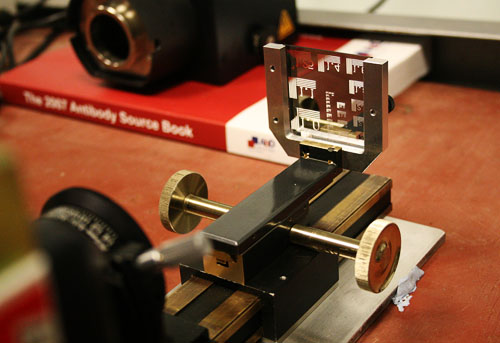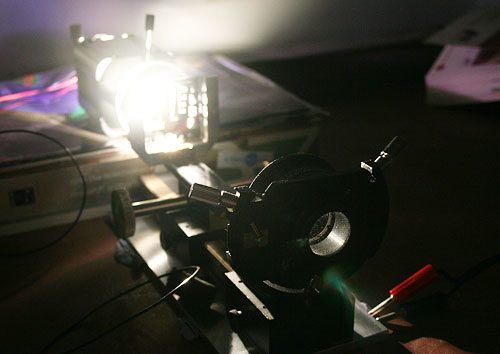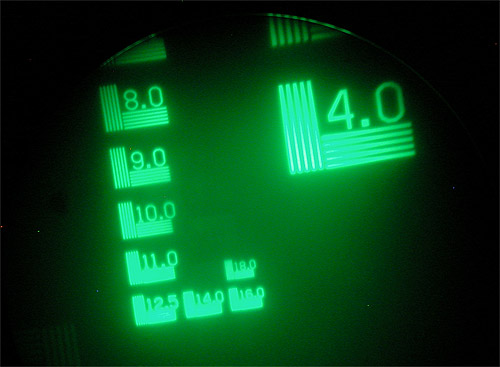Experiment: Projecting Patterned Illumination
In order to test that we can actually produce a focused illumination pattern
on a fluorescent microscope sample, we added a fairly simple static projection
system into the epifluorescence illumination pathway of a Leica DM IL infinity
tube microscope. A transmitted-light resolution target was used as the object
for this system, and the light from it collimated using a plano-convex lens of
the same 200mm focal length as the microscope's internal tube lens. The
demagnification at the sample for any objective lens should therefore be
identical to the objective's own nominal magnification.

Although a housing was made to allow the system to be used safely with the
microscope's mercury lamp attachment, the combination of reduced accessibility
and the operating constraints on the lamp made the process rather unwieldy
and these initial tests were done instead in the open with an ordinary halogen
source. In the event this provided adequate excitation light for our highly
fluorescent sample, a layer of sodium fluorescein solution under a plain
glass cover slip.

The following photograph is of the illumination pattern imaged onto the sample
by a 10x objective. The illumination is notably uneven and the camera's auto-exposure
somewhat misjudged, but the focused pattern can be clearly seen.

This next is a detail from the same image at the original capture resolution, and we can
see that the 18/mm lines -- the smallest on the target -- are reasonably clearly resolved.
At 10x demagnification
this will be 180/mm at the sample, for a line pitch of about 5.5 microns. Most of
the blurring here is likely due to the image being overexposed, and also to
inadequacies in the projection setup, but there is probably also some contribution
from out-of-focus emissions, given that there is no real object here, only the pattern
itself exciting a more-or-less uniformly fluorescent medium.

The final image is the same projection via a 40x objective, and we can see that the
illumination pattern is considerably less well resolved in this case. Innaccuries in
the projection system and exposure are both evident, and I suspect that the
out-of-focus emissions contribute to a greater degree also, since the light cone
will be significantly broader.

A few further tests are planned, including using a different tube lens, a more powerful
objective, more even illumination and (ahem) manual exposure control, but in the meantime
this already provides some useful input into the project.




